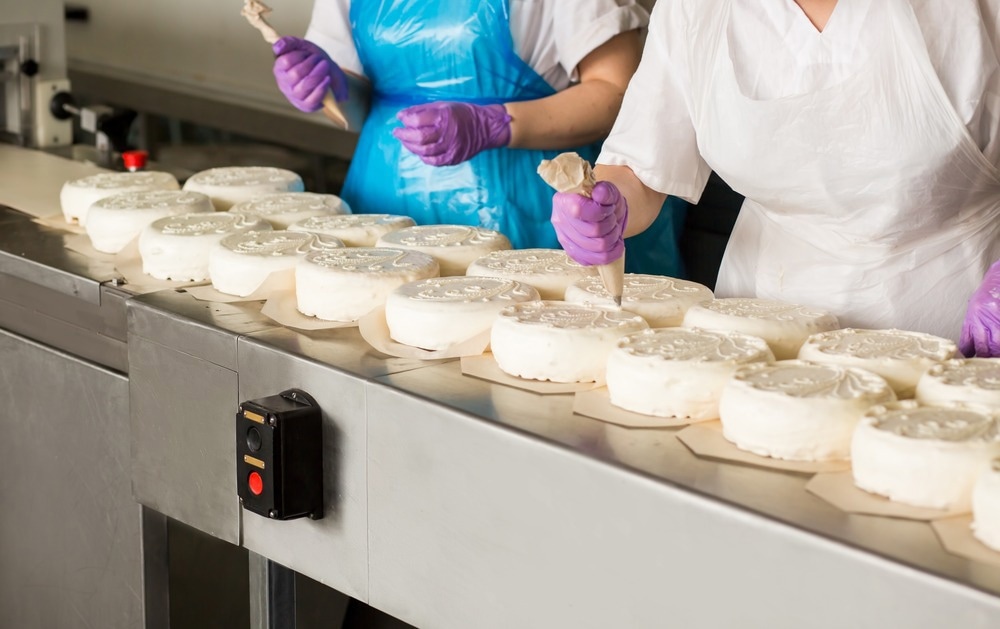Robots started to appear in food manufacturing in the 1980s. Today, food robotics is a mature market showing clear signs of growth. Most food producers use at least one robotics system on the production line.
Analysts recently valued the global food robotics market at $1.9 billion in 2020. The same analysis predicted a compound annual growth rate (CAGR) of 13.1% for the sector, which would send the total market’s worth north of $4 billion by 2026.
In food manufacturing, robotic systems tackle unique problems such as avoiding contamination, maintaining consumer safety, working with extremely tight profit margins, meeting high volume and throughput needs, and dealing with long and complicated supply chains.
The SARS-CoV-2 (COVID-19) pandemic accentuated these challenges. Many food manufacturers had to implement new safety protocols at pace while dealing with reduced workforces and the effects of local lockdowns. This increased restriction has led many companies to invest in robotics and automation, an investment that could shore up business continuity in the event of future pandemics.

Image Credit: DenisProduction.com/Shutterstock.com
What is Product Decoration and What Role Can Robots Play?
Early robotics applications in the food industry were limited to secondary packaging and palletizing tasks, where the food is already sealed before it comes into contact with the robot.
However, this changed in 1998 when the world’s first high-speed picking and packing robot, FlexPicker, was launched. The advent of picking and packing machines (typically “robotic arms”) saw robots interacting directly with food for the first time at industrial scales.
Such a technological advance enabled robots to be employed in product decoration tasks in addition to their traditional role in packaging. Product decoration is the application of “finish” elements to food products, such as toppings on a frozen pizza.
Another good example of product decoration is cake decoration. Robots are used to place icing on mass-manufactured cakes to specific configurations or even to vary designs and apply customized patterns. Robots are well suited to this task, as they do not need to learn new techniques for different designs.
Is it Safe to Let Robots Directly Contact Food?
Product decoration robots are likely to interact directly with unsealed food. This means that hygiene and decontamination are especially important, especially in the post-COVID-19 world we live in today.
The European Hygienic Engineering and Design Group (EHEDG) has published guidelines for the industry in this matter. The group’s guidance is also regarded as a model document for American manufacturers to follow. Anybody developing robotics for food production must closely adhere to these guidelines.
To ensure mass-produced food does not transmit pathogens and diseases, robots need to be able to withstand and support thorough cleaning procedures (with access to all surfaces on the robot, for example), including the use of chemical cleaning agents that are widely used in the industry.
Stainless steel versions of robot platforms, such as KUKA Robotics’ KR DELTA robot arm, have also been developed to eliminate contamination risks in automated food production.
Kuka also recently launched a range of food-grade lubricants this year, enabling robots to be safely deployed in food production.
Product Decoration Applications for Robotics
Hermary is a US-based machine vision company with integrated three-dimensional scanners with two robot arms from manufacturer ABB to create a robotics cake decoration platform. With the 3D model generated by scanners, the robot can create a unique path for decorating each individual cake that passes by it on a conveyor belt. As a result, the same robot can create different types of cake decorations, working with different types of cake, with minimal intervention between runs, and the platform can decorate 2,400 cakes per hour.
VARO is a Danish engineering company that has also created an automatic cake decoration robot. The VARO system can handle numerous patterns, including freehand drawings. It is flexible and has the ability to detect cake types automatically as they come down the conveyor belt. The robot can apply icing, chocolate sauce, fruit jam, and even small items like berries and nuts.
Rademaker, a Dutch specialist automation manufacturer for the food industry, produces two systems for pizza toppings. A waterfall system drops toppings on pizza bases automatically from two stacked conveyor belts. A targeted system uses traveling hoppers to apply toppings in particular areas to ensure an even spread across the pizza.
GEA is a German food technology supplier offering a range of systems for pizza decoration. A waterfall depositor, sauce depositing head, robot spreader, and a fingers depositor can all be used to achieve consistent, hygienic, and appetizing pizza decoration at scale.
Finally, unveiled as an educational project at 2013’s SXSW festival, the Barista Bot developed by New York City-based design company Hypersonic and Rock Paper Robot automatically decorates customers’ lattes with images of their own face.
References and Further Reading
Automatic Cake Decoration. VARO. Available at: https://www.varomachinery.com/food/decoration-robot.
Chrisandina, N.J. (2018). Robotics in food manufacturing: Benefits and challenges. Prescouter. Available at: https://www.prescouter.com/2018/08/robotics-food-manufacturing-benefits-challenges/.
Clarke, T. (2013). Robot-Drawn Latte Portraits. Trendhunter. Available at: https://www.trendhunter.com/trends/barista-bot.
Pizza Topping. Rademaker. Available at: https://www.rademaker.com/our-equipment/pizza-line/pizza-topping
Pizza Topping System. GEA. Available at: https://www.gea.com/en/products/bakery-equipment/depositors/pizza-topping-system.jsp
Schuster, S. (2021). Robots in the food industry: “Almost the entire industry is asking for automation”. KUKA. Available at: https://www.kuka.com/en-us/company/iimagazine/robots-in-the-food-industry.
Vision Guided Cake Decorating. Hermary. Available at: https://hermary.com/solutions/vision-guided-automatic-cake-decorating/.
Disclaimer: The views expressed here are those of the author expressed in their private capacity and do not necessarily represent the views of AZoM.com Limited T/A AZoNetwork the owner and operator of this website. This disclaimer forms part of the Terms and conditions of use of this website.